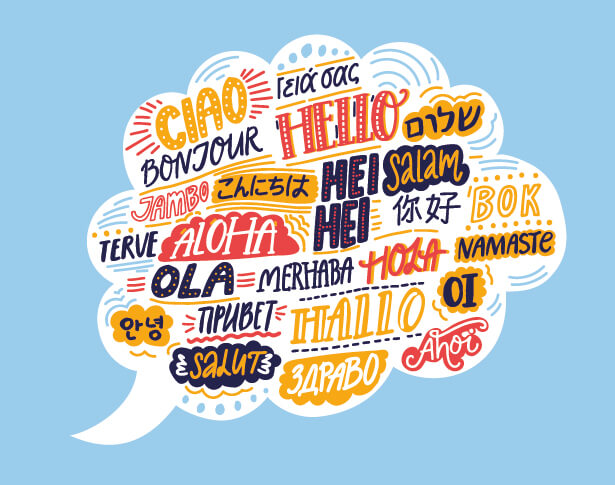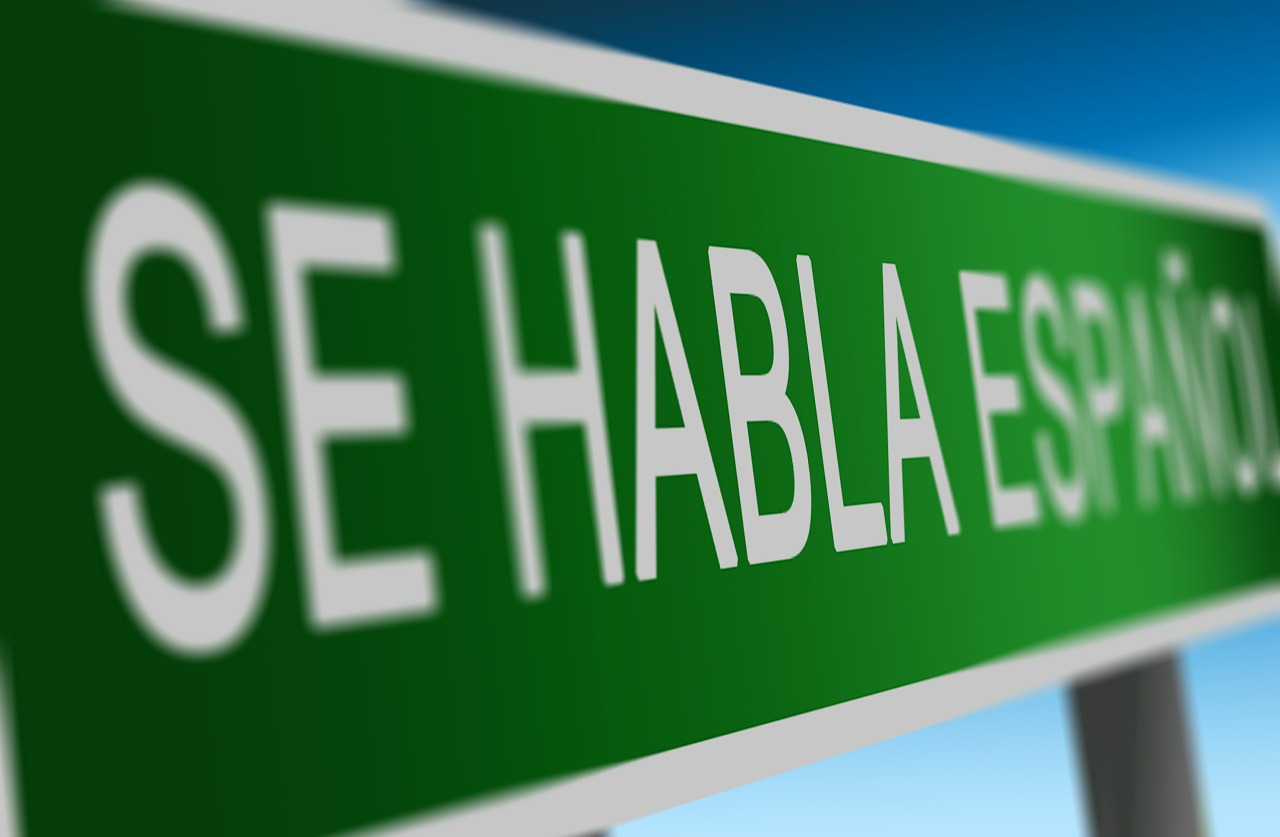Alphabet jumble – or the question of defining language
Almost a billion people speak the most widely spoken language in the world! But that’s just ONE language: one among almost 7,100 languages across the world!
According to the Ethnologue nobody can say that for sure, but with 7,100 languages, who’s counting anyways?
What actually constitutes a language?
What is the distinction between a language and a dialect?
Is there actually any difference? And what criteria are used to define these categories?
Are you finding all of this confusing?
Then you are in good company! These end up being questions about questions that do not always have a straightforward answer.
A glance at the Chinese language shows us how confusing the whole thing can become. Chinese is comprised of several languages: the most common of which is Mandarin—a language that, in turn, is comprised of 8 dialect groups.
Due to different scales or definitions (depending on the source) the numbers may therefore vary. In the end, the good news is that we largely agree on which five languages are most widely spoken across the world!
Languages that do not exist at all
As if 7,100 languages were not enough, people seem to love languages so much that they have invented a few fictional ones. Examples include Klingon from Star Trek, or Quenya, the language spoken by the elves in Tolkien’s Lord of the Rings. But no one shies away from clever new creations: the best example appearing in television advertisements with fluent “Denglisch”, a creative combination of German (Deutsch) and English!
Most-spoken languages – a question of scale
While the most widely spoken language in the world has nearly hit the one billion mark, the 30 least-spoken languages do not even reach 500 speakers!
German, with more than 100 million native speakers, takes first place as the most widely spoken mother tongue in the European Union. Sounds like a lot, until we look at the percentage of other languages spoken around the world. With an estimated total population of 7.67 billion (2019), only about 1.3 percent of the entire world population are native German speakers. This percentage does not look very impressive, yet it puts the German language amongst the top 15 most widely spoken languages in the world.
The exact position it occupies depends on whether one includes only the number of native speakers or also those who speak German as a second language. You can read more facts and figures on the German language here!
In the following list of the five most widely spoken languages in the world, each position is based on the number of native speakers.
5th most widely spoken language: Arabic
Arabic is the native language of approximately 290 million people in the world; yet the phrase “no one speaks Arabic” still holds true.
How can that be?
Just like in Chinese, Arabic dialects sometimes differ greatly from each other. Instead of considering these different dialects as a group of languages, these are defined as a single language to make things easier.
Modern Standard Arabic is mainly used in writing; however, spoken Arabic differs greatly depending on the region.
4th most widely spoken language: Hindi
While Hindi is one of the most widely spoken languages in the world, India also breaks other records in terms of languages.
With 22 official languages, India is unrivaled. Nevertheless, Zimbabwe occupies the first place when it comes to the country with the most official languages (16).
How so?
In India, many of the languages are only official at the state level, but not at the national level. The official languages of the Central Government in India are Hindi and English: this does not imply that these are the official languages in each state. Other than in India, Hindi is mainly spoken in neighboring Nepal.
3rd most widely spoken language: English
English is a world language!
It is spoken by most people around the world as a second or third language and is the lingua franca of the globe. In one way or another—whether traveling, at school, on television or on the job—English is the language that most people have come into contact. It therefore seems almost impossible to come up with something new on the English language. Nevertheless, anyone who searches long enough will find what they are looking for: did you know, for example, that the United States has no official language? Although the vast majority of Americans speak English, it has never been declared as the official language!
Incidentally, English is also the language with the most words. Who would have thought?
2nd most widely spoken language: Spanish
The majority of the approximately 460 million native Spanish speakers live outside of Spain—in South and Central America. One figure is especially surprising: there are around 58 million Spanish speakers in the United States (as of 2017). This places the U.S. in second position worldwide, because only Mexico has more Spanish speakers!
Have you ever read a sentence with the wrong emphasis because the question mark did not catch your eye until it was too late?
That can never happen to you with Spanish. ¡Question marks and exclamation marks are placed at the beginning and at the end of each sentence! However, why the initial punctuation mark is upside down remains an open question.
The Spanish language and its history
A language is much more than a means of communication. It contains traces of the history of a region and its culture, factors which shaped the language for centuries. Under the Romans, the Latin language spread across the Iberian Peninsula. This is where the Spanish language has its roots and therefore also belongs to the Romance branch of the Indo-European languages. While most know about the Latin roots of the language, the Arabic influence on Spanish often goes unmentioned. The Muslim conquest of the Iberian Peninsula by Arabs and Berbers began in the eighth century.
Large parts of the peninsula remained under Muslim rule until the 15th century. Their influence on architecture can still be admired today, especially in Andalusia. Arabs left their footprint even on the language. This means that there are still more than 4,000 Spanish words with an Arabic origin—just to name a few: almendra (almond), almohada (pillow) alfombra (carpet).
1st most widely spoken language in the world: Chinese
Native speakers of Chinese have almost hit the one billion mark, so the first place goes—by far—to the Chinese language. The second and third most widely spoken mother tongues in the world PUT TOGETHER have approximately as many speakers as Chinese by itself.
When one mentions Chinese, one generally refers to Mandarin: this is the Chinese language with the most native speakers. It belongs to the Sinotibetan language family, the second largest in the world. This family also includes Cantonese and Wu, two languages widely used across China. About 70% of the Vietnamese vocabulary consists of words with a Chinese origin: yet the most amazing fact is that Vietnamese and Chinese are not related.
Have you ever tried to order a coffee in Chinese? I have! Indeed, the pronunciation is as difficult as people say it is! Nevertheless, I was positively surprised when I started learning some basic terminology for my stay in Taiwan.
A timeless world language
Chinese is a language that is incorporates the idea of “here and now” in the truest sense of the word, and much more than other languages. That is because Chinese has no past or future tense. A reference to yesterday or tomorrow is enough to let the other person know what you are talking about. Another fact that helps with learning is that combining two written characters make them take on a new meaning. For example, whoever knows the numbers from 1 to 12 and the word for “month” can automatically articulate the names of all the months. While we say “January”, “February”, etc., in Chinese these are simply composed by the word “month” and the corresponding number, with the number placed first, followed by the character for “month”. “Hello Chinese” is a particularly good app for learning Chinese.
Would you like to read more about the habits and customs in China?
Feel free to take a look at the interesting articles we published on China’s business relations, territory, people and China’s business etiquette.












